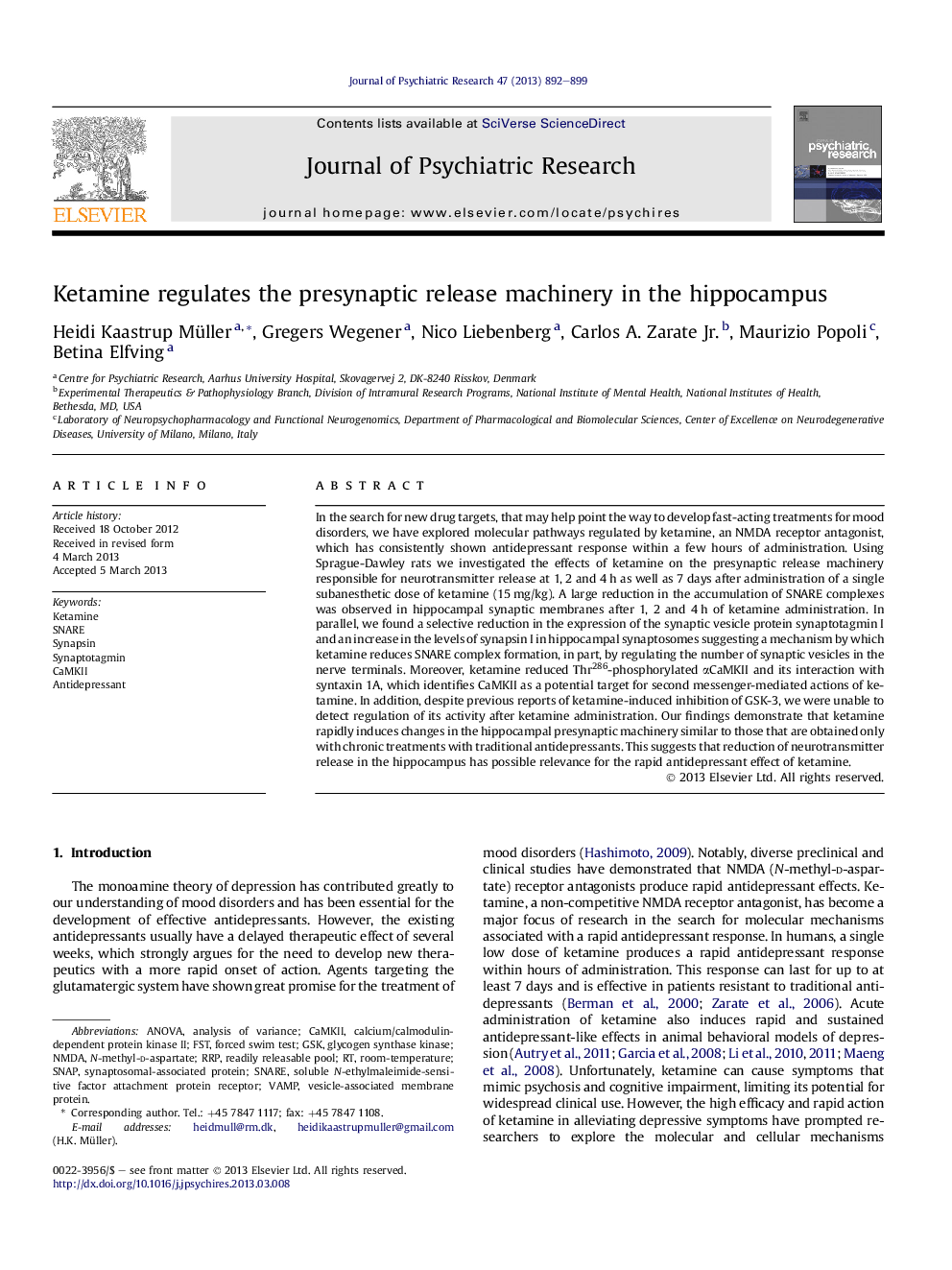| Article ID | Journal | Published Year | Pages | File Type |
|---|---|---|---|---|
| 327632 | Journal of Psychiatric Research | 2013 | 8 Pages |
In the search for new drug targets, that may help point the way to develop fast-acting treatments for mood disorders, we have explored molecular pathways regulated by ketamine, an NMDA receptor antagonist, which has consistently shown antidepressant response within a few hours of administration. Using Sprague-Dawley rats we investigated the effects of ketamine on the presynaptic release machinery responsible for neurotransmitter release at 1, 2 and 4 h as well as 7 days after administration of a single subanesthetic dose of ketamine (15 mg/kg). A large reduction in the accumulation of SNARE complexes was observed in hippocampal synaptic membranes after 1, 2 and 4 h of ketamine administration. In parallel, we found a selective reduction in the expression of the synaptic vesicle protein synaptotagmin I and an increase in the levels of synapsin I in hippocampal synaptosomes suggesting a mechanism by which ketamine reduces SNARE complex formation, in part, by regulating the number of synaptic vesicles in the nerve terminals. Moreover, ketamine reduced Thr286-phosphorylated αCaMKII and its interaction with syntaxin 1A, which identifies CaMKII as a potential target for second messenger-mediated actions of ketamine. In addition, despite previous reports of ketamine-induced inhibition of GSK-3, we were unable to detect regulation of its activity after ketamine administration. Our findings demonstrate that ketamine rapidly induces changes in the hippocampal presynaptic machinery similar to those that are obtained only with chronic treatments with traditional antidepressants. This suggests that reduction of neurotransmitter release in the hippocampus has possible relevance for the rapid antidepressant effect of ketamine.
